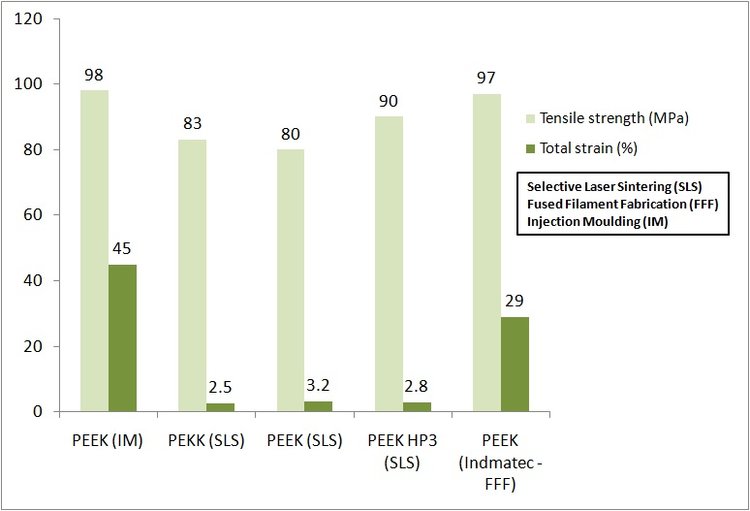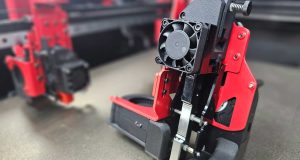Since additive manufacturing methods have been used more and more in the past few years, the biggest barrier that holds the different methods back from being used in industrial applications have been the limited materials that can be processed. For example, for the well-known Fused Filament Fabrication (FFF), which is also the most used method by many private users, there just have been simple polymers like ABS that can only be used for models and not for actual industrial parts.
Now combining the high performance polymer Polyetheretherketone (PEEK) with additive manufacturing like FFF, it can be used for several different applications in industries like automotive, oil & gas, aerospace, medical or semiconductors to produce complex geometries or individual parts with less use of material.
This variety of different applications is made possible by the great properties of PEEK. In fact, PEEK is one of the most durable polymers and can be compared to metals like aluminum. Due to its very high melting point of 343 °C (649 °F) and a using temperature range from -196 °C (-321 °F) to 260 °C (500 °F) it can be used in a lot of extremely demanding environments, e.g. powertrains in automobiles. With its high temperature resistance, lower weight high wear resistance and chemical inertness, the polymer can replace metals in those demanding environments to save weight and make aircrafts or automobiles more efficient. PEEK benefits from its structural endurance up to pressures in the order of 200 MPa (~29000 PSI), too. Ideal for engines or sealing parts. Because of its strength, PEEK can also be used in lightweight constructions, processed with the FFF method that can easily make honeycomb-like structures.
One of the obstacles, why 3D printing still is not used for industrial manufacturing in a big way is the lack of experimentally generated data. These data that clearly demonstrate what 3D printing with high performance materials is capable of. To overcome the mistrust, insecurity and caution that comes in general along with new technologies, data that supports this technology has to be published.
Test Data like Figure 1 that shows a comparison of the tensile strength and strain for PAEK (PEEK and PEKK are chemical derivatives of PAEK) parts fabricated using the different manufacturing methods selective laser sintering (SLS), injection molding (IM) and fused filament fabrication with a Indmatec HPP 155 printer (Indmatec FFF). Generally, the industry bench-mark for polymeric materials is injection moulded part datasets. Regarding this, the plot in Figure 1 shows that there are clear differences in mechanical properties where the injection moulded part as well as the FFF 3D printed part exhibit superior strength.

Regarding test data like this, FFF 3D printed PEEK has the ability to be used in industrial applications. Together with its properties, the material is suitable for applications where materials are sought that can withstand their demanding environment. Combined with 3D printing it enables the different industries to use this high performance polymer in a material and cost lowering way. Individual, complex parts can be processed easier and with less effort.
Subscribe to our Newsletter
3DPResso is a weekly newsletter that links to the most exciting global stories from the 3D printing and additive manufacturing industry.
























